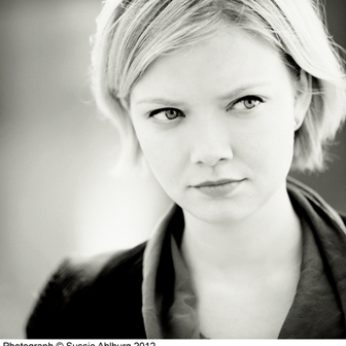Composer: Franz Schubert (b. 1797 - d. 1828)
Performance date: 01/07/2014
Venue: Bantry Library
Composition Year: 1827
Duration: 00:47:36
Recording Engineer: Richard McCullough, RTE
Instrumentation: vn, vc, pf
Instrumentation Category:Piano Trio
Artists:
Alina Ibragimova -
[violin]
Andreas Brantelid -
[cello]
Cédric Tiberghien -
[piano]

When we come to the towering masterpieces
of Schubert’s maturity, the tragedy of his situation becomes almost unbearable.
Like Mozart who also died in his early thirties, when we talk of their mature
works, we mean compositions written in their late twenties. Beethoven was
thirty when he wrote his first symphony and the Op.18 Quartets, while Brahms
was forty when he finished his first quartet and forty-three when he was
finally content with his first symphony. Schubert’s oeuvre was massive for such
a short life, nine hundred and sixty published works from songs to symphonies,
from sonatas to operas and from dances to quartets. He built his reputation as
a writer of exquisitely beautiful songs, but unfortunately this was held
against him when he wanted to be taken seriously as a composer of symphonies
and chamber music in the Beethoven tradition.
The two piano trios date from 1827 and may
have been inspired by his friendship with a young pianist Karl Maria von
Bocklet, the cellist Josef Linke and the renowned violinist Ignaz Schuppanzigh.
Certainly they played the E flat Trio twice in public in the last year of
Schubert’s life. It was also the only work of Schubert’s to be published outside
Probst in
His negotiations with publishers had been arduous and he had reacted to
comments that the work was too long by cutting two substantial chunks – nearly
100 bars – out of the last movement.
The first movement opens with a commanding
theme of Beethovenian proportions and directness. Despite the opportunities
this theme would seem to offer for development and elaboration, Schubert
ignores its potential and concentrates instead on a cheerful melodic idea introduced
almost as an afterthought that reappears insistently throughout the movement.
The second subject is a poignant wisp of melody, lightly accompanied, that
receives scant attention at its first appearance but returns to dominate the
development. The recapitulation is built on a massive scale like the rest of
the movement and it builds up an earth-shaking climax before we reach the coda.
The Andante is the heart of the work,
combining power and poetry in a dramatically memorable way and even spreading
its influence into the finale as well. Schubert borrowed the walking quaver
chords and some melodic ideas from a Swedish folksong sung to him by a young
Swedish tenor. Particularly powerful is a motto-like falling octave that
accompanied the cry Farväl (Farewell)
that Schubert makes a main feature of the movement. The walking chords are
given first by the piano with the first theme in the cello, they then swap
places before the violin picks up the Farewell motto. This eventually forms the
core of two terrifying outbursts that hurl us unprepared into Schubert’s bitter
world of inner torment and in the process changes the dramatic possibilities of
the piano trio for ever. The coda in a slower tempo provides one of those
moments of heartbreaking poignancy as he sings out Farewell one last time.
The third movement is marked scherzando but
Schubert also describes it as a minuet. It begins as an exact canon with the
two lines imitating each other at three beats distance until he introduces
other voices and eventually the canon is dismissed in favour of light-hearted
interplay. The Trio opens as a very heavy-footed peasant dance, but it is
lightened by a more graceful second idea when the dance is suddenly unable to
decide how to continue.
Posterity on the whole agrees with
Schubert’s publisher about the cuts in this last movement, though Schubert must
have made some of them with a heavy heart. The finale begins amiably like an
unassuming rondo in 6/8 and picks up a captivating second theme with
exquisitely delicate scoring, which gradually increases its momentum. Before
the development Schubert comes up with a startling innovation, a reprise of the
slow movement’s main theme transformed into 6/8 time and tempo. This
extraordinary stroke is repeated in the coda with a wonderfully transfigured
return of the slow movement theme, it is one of those moments when the heavens
seem to open.
Copyright © 2025 West Cork Music. All rights reserved.
Designed and developed by Matrix Internet